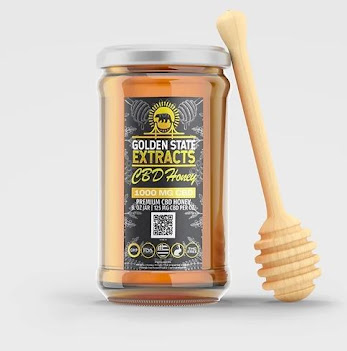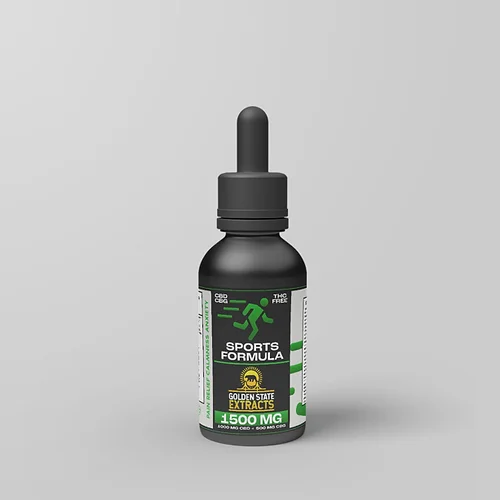How to use CBD for persistent pain?
Imagine experiencing constant agony for more than a year straight with little to no relief; that is how chronic pain feels.
When someone is hurt, they frequently experience pain in the afflicted region until the pain goes away or the injury heals. Those who suffer from chronic pain do not enjoy this alleviation and continue to feel agony, even while at rest.
Constant pain has a negative impact on a person's self-esteem, physical health, and mental health. Unfortunately, people with chronic pain who are unable to find relief continue to struggle with pain management.
The good news is that experts are finding, as more study is done, that 3000mg CBD Tincture for chronic pain may be the answer to helping patients naturally control their pain so they can more easily go about their everyday lives.
For individuals to safely manage their pain and other sources of discomfort, such anxiety and sleeplessness, Golden State Extracts provides a variety of CBD solutions.
Section IV: Chronic Pain
Chronic pain: what is it?
Who is affected by it, and why?
Other Roots of Chronic Pain
Chronic Pain Types
How to manage persistent discomfort
CBD Oil for Pain Management
Why utilize CBD oil for persistent discomfort
How does it function inside of your body?
CBD oil for joint pain and arthritis
Migraine relief with CBD oil
Cancer Tincture Pain Relief using CBD oil:
Instructions for Safe Dosage of CBD Oil for Pain
Optimum CBD for pain
Continual Pain
CBD oil for persistent discomfort
Chronic pain: what is it?
Any pain that persists for more than 12 weeks is considered chronic pain.
Pain is felt when an injury or impact activates the pain receptors in the afflicted area, to put it simply. However, unless you have persistent pain, this sensor stops providing pain signals once the damage has healed.
These sensors never cease providing pain signals to the brain when a person has chronic pain. As a result, the person is forced to regularly endure unbearable agony with little to no relief.
Who is affected by it, and why?
Six million Canadians, according to Statistics Canada, currently deal with chronic pain. That is roughly 20% of who we are. People who experience chronic discomfort frequently include:
Older adults: Arthritis, joint pain, and other kinds of chronic pain can occasionally be brought on by age-related strain on muscles.
Athletes: Athletes regularly suffer injuries from collisions and muscular strain, both of which can cause chronic pain over an extended period of time.
Individuals with Prior Health Issues Chronic pain is frequently brought on by pre-existing medical problems, especially those that affect the muscles. This is due to the fact that many diseases already place strain on various bodily components. Chronic pain sufferers frequently have diseases including fibromyalgia, rheumatoid arthritis, and osteoarthritis as their underlying disorders.
Chronic pain is frequently exacerbated by underlying illnesses and disorders that already have an impact on pain. The following illnesses or disorders frequently result in persistent pain:
Certain cancer types
AIDS
A number of sclerosis
Peptic ulcers
A gallbladder condition
Nervosa post-herpetica (PHN)
Other Roots of Chronic Pain
Although physical trauma and normal physiological changes are the main causes of chronic pain in humans, there are other daily activities and behaviors that can cause (or exacerbate) chronic pain. These elements are typical in that they significantly exert strain on a person's body:
Bad posture
Added weight
Wearing stilettos
Harm from a forceful hit (car accidents etc.)
Chronic Pain Types
Any discomfort that lasts for more than three months is considered chronic pain. However, kinds of chronic pain are distinguished by where the pain is felt due to the various ways this pain might be caused (injury, disease, etc.).
It's crucial to keep in mind that depending on the cause of the pain, some may be harder to manage than others.
The most typical kinds of chronic pain, according to VeryWellHealth, include:
Cancer suffering
Migraines & headaches
Rheumatoid bowel syndrome (IBS)
A low back ache
Pain from multiple sclerosis
Ache that is neurotic
Osteoarthritis
Fibromyalgia
Temporomandibular dysfunction
CBD oil for persistent discomfort
How to manage persistent discomfort?
Many people with chronic pain struggle on a daily basis to manage their pain since many available medications either temporarily relieve symptoms or are too incapacitating to be used at work.
MEDICATION
Opioids, non-opioids, and adjuvant analgesics are the three primary groups of medications used to treat chronic pain, according to the American Chronic Pain Association (ACPA) (i.e. antidepressants and anticonvulsants.)
Non-opioids/Over the Counter: People with chronic pain frequently take over-the-counter anti-inflammatory drugs like Advil. Nevertheless, these drugs often just mask symptoms and have transient effects.
It's also crucial to note that using an anti-inflammatory drug like Advil or Ibuprofen can only make those with GERD or acid reflux who also have chronic pain more uncomfortable. The sole remaining over-the-counter choice is Tylenol, but it's a milder drug that frequently isn't enough.
Stronger over-the-counter drugs are also available. These include muscle relaxants like Robaxacet, which work well but can make you feel extremely sleepy and make it difficult to concentrate.
Opioids: According to the Mayo Clinic, opioids are "a large class of painkillers that function by interacting with opioid receptors in your cells." To put it simply, opioids interact with the "opioid receptors" found in your brain cells. This results in diminished or dulled pain signals, which might deceive your brain into thinking it is not getting pain signals and dull pain as a result.
The most potent painkillers for those with chronic pain are opioids. Morphine, methadone, and oxycodone are a few examples of common opioids that are given for people with chronic pain.
The unpleasant truth is that powerful drugs are frequently used to manage chronic pain, which can make it challenging for sufferers to go about their daily lives.
PHYSIOTHERAPY
In physiotherapy, a patient is led by a medical expert through a variety of exercises that have varied aims.
In order to relieve stiffness and aid in improving movement, physiotherapists lead patients with chronic pain through stretches, exercises, and other physical therapy that specifically targets painful areas.
Even while physiotherapy is beneficial for many people, it is a Tincture Pain Relief method that needs regular practice and might lose its effectiveness in between visits as your body reverts to its previous condition of stiffness and tightness.
MEDITATION
The mental impacts of guided meditation are more important than its physical consequences when it comes to pain treatment. Meditation is thought to engage the areas of the brain that can better regulate pain because much of how pain is processed occurs in the brain.
CBD Oil for Pain Management
One of the more than a hundred chemical components contained in cannabis, cannabidiol (CBD) oil, is increasingly being used as a natural Tincture Pain Relief. The most frequent uses of CBD oil for pain management are for back pain and joint pain (arthritis).


Comments
Post a Comment